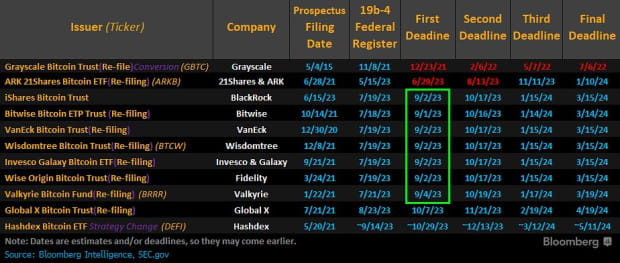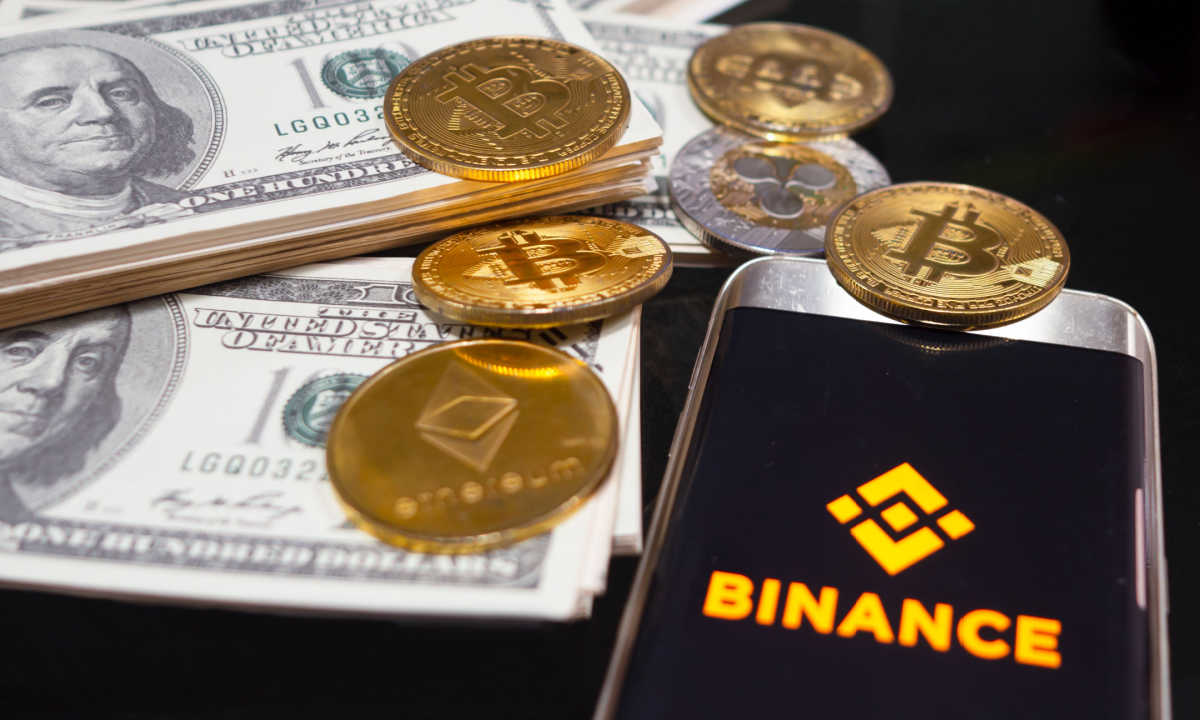Silicon Valley Financial institution (SVB) boasted over $200 billion in property and was a lifeline for crypto firms.
Notably, it was one of many few establishments providing companies to crypto firms in the USA as different banks shied away from the sector, fearing threat and the potential for a sudden regulatory crackdown.
The downfall of SVB, Signature Financial institution and Silvergate Financial institution, all inside a short while, has instilled fears of one other 2008-like monetary disaster. Whereas policymakers proceed to guarantee the general public that they’re engaged on a restoration plan — with the Biden administration saying measures to guard depositors — the financial institution run created a panic in U.S. markets.
A financial institution run occurs when the vast majority of depositors at a selected financial institution determine to withdraw their funds on the similar time. Most banks don’t have all depositors’ cash available since — underneath the fractional reserve banking system — banks are solely required to carry a proportion of buyer deposits at any time.
The system has been profitable for a very long time, however each decade or so, a financial institution run occurs, laying naked the banking system’s vulnerability.
These banks skilled asset-liability mismatches attributable to larger deposits than credit score in the course of the COVID-19 pandemic. This led to banks’ extra use of liquidity in private and non-private sector bonds. Nonetheless, with fast rate of interest hikes by the U.S. Federal Reserve, these banks incurred huge losses, ultimately resulting in a liquidity disaster.
The asset-to-liability mismatch, though frequent in most conditions for banks, was untenable within the present situation as a result of sharp decline in deposits.
Crypto will get tangled within the US banking disaster
The crypto trade has confronted a lot criticism in current occasions owing to a slew of high-profile collapses and losses for buyers. Nonetheless, within the case of SVB, crypto’s involvement was much less causational and extra attributable to counter-party threat on the a part of stablecoin issuer Circle.
Following the downfall of SVB on March 10, USD Coin (USDC) issuer Circle introduced that almost $3.3 billion of the reserves backing USDC have been caught in SVB.
The announcement drastically affected the stablecoin, which misplaced its peg to the U.S. greenback, ultimately falling to $0.87. The depegging of USDC created a panic within the crypto trade because the stablecoin has the second-largest market share, and is fashionable amongst centralized and decentralized ecosystems.
Though Circle assured that they’d compensate for the shortfall with different property, merchants and whales began to swap USDC for different stablecoins accessible available on the market — even at a loss.
One panicked dealer who tried a dangerous and finally pricey transfer to exit USDC obtained a mere $0.05 in Tether (USDT) for $2 million price of USDC.
Contrastingly, those that remained assured that USDC would ultimately regain its peg began shopping for USDC at a decrease worth in hopes of creating income as soon as the worth elevated again to $1.00.

USDC ultimately repegged to the U.S. greenback on March 13, as Circle confirmed it had discovered a technique to transfer its funds out of SVB. The banking crisis-induced panic in crypto markets subsided inside days.
Current: AI set to profit from blockchain-based information infrastructure
In truth, crypto flipped the narrative and proved a protected haven in the course of the ongoing banking disaster, even when most conventional markets and monetary establishments have been bleeding crimson. Whereas slumping barely on March 10, the costs of main cryptocurrencies like Bitcoin (BTC) and Ether (ETH) have seen a marked enchancment over the past 10 days.
SVB Monetary Group, the mum or dad firm of SVB financial institution, ultimately filed for chapter on March 17 within the U.S. Chapter Court docket for the Southern District of New York.
US regulators spring into motion, however is it too little too late?
Whereas crypto as an asset class might have exited this disaster comparatively unscathed (a minimum of for now), questions stay as to the foundation causes of the disaster and whether or not it may have been prevented.
Cathie Wooden, the CEO of asset administration agency ARK Make investments, criticized regulators and the Federal Reserve for failing to cease the present financial institution run, saying that enforcement businesses have been utilizing cryptocurrency as a scapegoat for his or her banking supervisory failures.
If you’re right, Congressman, then the FDIC and others will stop the US from taking part in an important part of the web revolution. Such as you, I imagine regulators are utilizing crypto as a scapegoat for their very own lapses in oversight of conventional banking. https://t.co/UDh3bwB2pB
— Cathie Wooden (@CathieDWood) March 16, 2023
Regardless of these criticisms, the Fed is investigating the circumstances surrounding Silicon Valley Financial institution’s downfall, with Fed vice chair for supervision Michael Barr not too long ago launching a assessment of the scenario. The report’s findings are anticipated by Might 1.
The U.S. Division of Justice and the Securities and Alternate Fee have additionally launched impartial inquiries into the collapse of SVB, together with studies in regards to the gross sales of the financial institution’s shares by executives simply days earlier than regulators shut it down.
Nonetheless, the SVB financial institution run shouldn’t be a brand new phenomenon. Tony Petrov, a blockchain and fintech lawyer, advised Cointelegraph that the financial institution disaster is a man-made mess, explaining:
“In accordance with Boeing, roughly 80% of airplane accidents are attributable to human error. I feel this truth, taken as a metaphor, may also work for the monetary trade. What we’re witnessing now could be the crash of the financial system primarily based on ‘reckless capitalism,’ through which compliance procedures and threat administration have been held in a stall within the yard, often known as a tick field train.”
Bradley Barnhorst, chair of the finance main and CFP program director at DeSales College, advised Cointelegraph that SVB’s downfall may very well be attributed to improper administration of the financial worth of fairness, a failure to guard in opposition to rate of interest threat and an abrupt lower in deposits.
He really useful that banks ought to “undertake rigorous threat administration processes and enhance capital ranges to guard in opposition to potential losses.”
Barnhorst additional acknowledged that banks must diversify mortgage portfolios, be extra selective with investments, and “monitor and handle the dangers related to their investments to make sure that they aren’t overexposed to any explicit sector or trade.”
In accordance to a current Stanford College examine, 186 U.S. banks are in peril of dealing with a financial institution run due to rising rates of interest and a large proportion of uninsured deposits. The examine discovered that property like treasury notes and mortgage loans might lose worth when new bonds are issued with larger rates of interest. Even insured depositors may expertise impairments if half of the uninsured depositors abruptly withdraw their cash from these 186 banks. The banks wouldn’t have sufficient property to reimburse all depositors absolutely.
Current: College college students reveal new Web3 options at ETHDenver 2023
Chris Barnes, managing director of the monetary companies division at market information analytics agency Escalent, advised Cointelegraph that 2008 was the final time the banks confronted a detrimental belief atmosphere, and 2023 may very well be one other related yr.
Barnes defined, “The stress checks for big establishments work and are stable — it’s downstream banks they’re frightened about. These banks have been exempted from legislative modifications in 2018.”
“If the principles would have been in place, this wouldn’t have occurred. When this unfolded, there was loads of anger in [Washington] D.C. as a result of Silicon Valley Financial institution pushed so laborious to get off the regulatory loop (not very ironic). There must be a second kind of stress take a look at for banks under important monetary establishments,” he added.









![Methods to Purchase DeFi Pulse Index on CoinStats [The Ultimate Guide 2022]](https://bitrrency.com/wp-content/uploads/2022/05/DeFi_Pulse_og-100x70.png)

